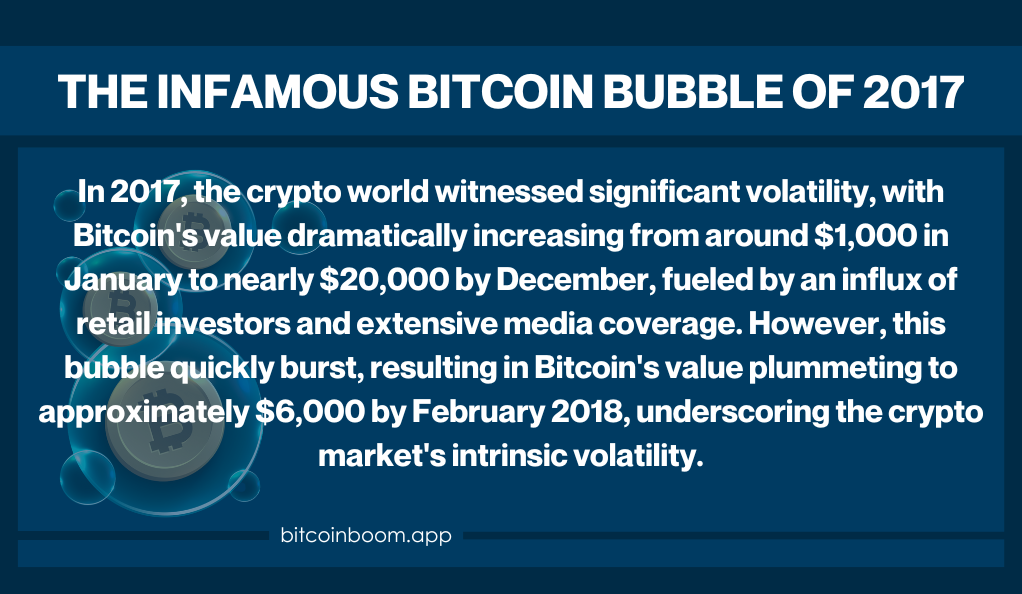In the dynamic world of cryptocurrencies, the term “volatility” is frequently mentioned, often with a mix of excitement and caution. But what exactly is market volatility, and why is it so prevalent in the crypto realm?
What is Market Volatility?
At its core, market volatility refers to the rate at which the price of an asset, in this case, a cryptocurrency, moves up or down for a given set of returns. It’s a measure of the asset’s variability over a specific period. High volatility indicates that the price of the cryptocurrency can change dramatically over a short time span, while low volatility suggests that the price remains relatively stable.
| Cryptocurrency | Average Daily Price Change (%) |
|---|---|
| Bitcoin (BTC) | 4.2% |
| Ethereum (ETH) | 5.1% |
| Cardano (ADA) | 6.3% |
| Ripple (XRP) | 4.8% |
Crypto Volatility: A Double-Edged Sword
For many investors and traders, volatility is a double-edged sword. On one hand, it presents opportunities for significant profits, especially for day traders who thrive on short-term price movements. On the other hand, it introduces a higher level of risk, as the value of investments can decrease just as rapidly as they can increase.
Why is Understanding Crypto Volatility Important?
Understanding volatility is crucial for anyone involved in the cryptocurrency market. It helps investors gauge the risk associated with their investments and make informed decisions. For instance, a risk-averse investor might opt for cryptocurrencies with lower volatility, while a risk-tolerant trader might seek out highly volatile assets for potential high returns.
Factors Influencing Crypto Volatility
The cryptocurrency market is known for its wild price swings, and understanding the factors that contribute to this volatility is crucial for any investor. Here, we delve into the key elements that play a significant role in the price fluctuations of cryptocurrencies.
1. Market Demand and Supply
Just like any other market, the principles of demand and supply heavily influence the prices of cryptocurrencies. When more people want to buy a cryptocurrency (demand) than sell it (supply), then the price moves up. Conversely, if more people want to sell a cryptocurrency than buy it, the price moves down.
2. Regulatory News and Events
The legal landscape for cryptocurrencies is still evolving, and news about regulatory changes can have immediate effects on the market. Positive news, such as a country legalizing Bitcoin, can lead to price surges, while negative news, like a ban on ICOs (Initial Coin Offerings), can cause prices to plummet.
3. Technological Changes and Updates
Cryptocurrencies operate on technology and any significant update or change in the technology can lead to price volatility. For example, a hard fork (a radical change to a network’s protocol) can create uncertainty and lead to price volatility.
4. Market Sentiment and Investor Behavior
The mood or sentiment of investors in the market can lead to volatile price movements. Positive sentiment can lead to price surges, while negative sentiment can lead to price drops. Furthermore, the behavior of investors, especially large holders, can influence the market. If a large holder decides to sell a significant amount of a cryptocurrency, it can lead to a sharp decline in its price.
5. Speculation
Many investors in the cryptocurrency market are speculators, looking to profit from short-term price movements. This speculative trading contributes to the market’s volatility.
6. External Factors
Events in the broader financial markets can also impact the volatility of cryptocurrencies. For example, a crash in the stock market can lead to a sell-off in the cryptocurrency market as well.
7. Liquidity
Liquidity refers to how quickly an asset can be bought or sold in the market without affecting its price. Cryptocurrencies tend to have lower liquidity than traditional currencies, which can lead to more significant price swings.
Historical Perspectives on Crypto Volatility
The cryptocurrency market has a relatively short history compared to traditional financial markets, but it has experienced its fair share of dramatic ups and downs. Understanding these historical fluctuations is crucial for investors looking to navigate the volatile crypto landscape.
The Infamous Bitcoin Bubble of 2017

One of the most notable periods of volatility in the crypto world occurred in 2017, when Bitcoin’s price skyrocketed from around $1,000 in January to nearly $20,000 by December. This meteoric rise was fueled by a surge in retail investors and widespread media coverage. However, the bubble burst just as quickly, with Bitcoin’s price plummeting to around $6,000 by February 2018. This dramatic rise and fall served as a stark reminder of the inherent volatility in the crypto market.
The Altcoin Explosion and Crash
During the same period, numerous altcoins (alternative cryptocurrencies to Bitcoin) also experienced significant volatility. Many saw exponential growth in their prices, only to crash shortly thereafter. For example, Ripple (XRP) reached an all-time high of $3.84 in January 2018, only to fall to $0.29 by the end of the year.
The Stablecoin Introduction
In response to the extreme volatility, stablecoins were introduced as a means to provide stability in the crypto market. Stablecoins are cryptocurrencies designed to minimize price volatility, typically by pegging their value to a stable asset like the US Dollar. Tether (USDT) and USD Coin (USDC) are popular examples.
The 2020-2021 Bull Market
The crypto market experienced another significant bull run starting in late 2020, driven by institutional investment, the rise of decentralized finance (DeFi), and the introduction of non-fungible tokens (NFTs). Bitcoin reached a new all-time high of nearly $65,000 in April 2021, while altcoins like Ethereum also saw substantial price increases.
Lessons Learned
These historical periods of volatility have provided valuable lessons for investors:
- Diversification is Key: Spreading investments across different assets can help mitigate risk.
- Do Your Own Research: Understanding the fundamentals of a cryptocurrency can provide insight into its potential volatility.
- Expect the Unexpected: The crypto market is still young and can be influenced by a variety of factors, making it inherently unpredictable.
Measuring and Analyzing Crypto Volatility
To navigate the turbulent waters of the cryptocurrency market, investors and traders employ various tools and indicators to measure and analyze volatility. Understanding these metrics is crucial for making informed investment decisions.
Volatility Index (VIX)
The Volatility Index, often referred to as the “Crypto VIX,” measures the market’s expectation of volatility over the coming 30 days. It is calculated based on the prices of options and futures on a particular cryptocurrency. A higher VIX value indicates higher expected volatility, while a lower value suggests a more stable market.
Average True Range (ATR)
The Average True Range is a technical analysis indicator that measures market volatility by decomposing the entire range of an asset price for that period. In simpler terms, it tells you how much a cryptocurrency’s price has moved on average over a set number of periods, which can be days, weeks, or months.
Bollinger Bands
Bollinger Bands consist of a middle band being an N-period simple moving average (SMA), an upper band at K times an N-period standard deviation above the middle band, and a lower band at K times an N-period standard deviation below the middle band. Cryptocurrency prices tend to bounce within the bands, and when the price breaks the bands, it can signal a continuation or a reversal of the trend.
Historical Volatility
Historical Volatility is a statistical measure of the dispersion of returns for a given security or market index over a specific period of time. It is calculated by taking the standard deviation of the daily price changes over a certain period, expressing it on an annualized basis.
Implied Volatility
Implied Volatility is a metric that captures the market’s view of the likelihood of changes in a given asset’s price. Traders can derive the implied volatility from the price of options, which can provide insights into the market’s expectations of future volatility.
Moving Averages
Moving averages smooth out price data to create a single flowing line, which makes it easier to identify the direction of the trend. The two most common types are the Simple Moving Average (SMA) and the Exponential Moving Average (EMA). Short-term averages responding to changes in price quicker than long-term averages can signal increased volatility.
Strategies for Managing Risk in Volatile Markets
Navigating the crypto market’s volatility requires a well-thought-out strategy to manage risks and capitalize on opportunities. Here, we explore various approaches that investors and traders can adopt to safeguard their investments.
1. Diversification and Asset Allocation

One of the fundamental strategies for risk management is diversification. By spreading investments across different assets, you reduce the impact of a poor-performing asset on your overall portfolio. Asset allocation, on the other hand, involves deciding how to distribute your investments among different asset classes, such as cryptocurrencies, stocks, bonds, and cash. A well-balanced portfolio tailored to your risk tolerance can help mitigate risks in volatile markets.
2. Setting Stop-Loss and Take-Profit Limits
Stop-loss orders allow you to set a predetermined price at which your asset will be sold, minimizing potential losses. Take-profit orders work similarly but in the opposite direction, enabling you to lock in profits when the asset price reaches a certain level. These tools are essential for managing risks, especially in volatile markets where prices can change rapidly.
3. The Role of Stablecoins in Risk Management
Stablecoins, such as Tether (USDT) and USD Coin (USDC), are designed to maintain a stable value by pegging them to a reserve of assets. In times of high volatility, investors can convert their assets into stablecoins to preserve their value. Once the market stabilizes, they can convert back into other cryptocurrencies or fiat currency.
4. Regular Rebalancing
Rebalancing involves periodically adjusting your portfolio to maintain your desired asset allocation. In a volatile market, asset values can change quickly, leading to an imbalance in your portfolio. Regular rebalancing ensures that your investments align with your risk tolerance and investment goals.
5. Utilizing Hedging Strategies
Hedging involves taking positions in the market to offset potential losses in your investment portfolio. For example, if you hold a long position in Bitcoin, you might take a short position in Ethereum as a hedge. If Bitcoin’s price falls, the gains from the short position in Ethereum can offset the losses.
6. Embracing a Long-Term Perspective
Short-term price fluctuations are a characteristic of volatile markets. By adopting a long-term investment perspective, you can avoid making impulsive decisions based on short-term market movements. This approach requires patience and a strong belief in your investment choices.
Opportunities in Volatile Crypto Markets
While market volatility in the crypto world can present significant risks, it also opens up opportunities for savvy investors and traders. In this section, we explore strategies to capitalize on market fluctuations and turn volatility to your advantage.
Day Trading
Day trading involves buying and selling assets within a single trading day, taking advantage of short-term price movements. Crypto markets are ideal for day trading due to their inherent volatility, providing numerous opportunities to enter and exit trades profitably. Successful day traders rely on technical analysis, trading indicators, and a well-defined strategy to make quick decisions.
Swing Trading
Swing trading is a strategy that takes advantage of price “swings” in the market. Traders identify assets with short- to medium-term price momentum and capitalize on the upward or downward swings. This strategy requires patience and a good understanding of market trends and technical analysis.
Arbitrage
Arbitrage exploits price discrepancies of the same asset across different exchanges. Traders can buy the asset at a lower price on one exchange and sell it at a higher price on another, profiting from the difference. While the advent of sophisticated trading bots has made arbitrage opportunities less common, they still exist, especially in the fast-paced crypto market.
ICO Investments
Initial Coin Offerings (ICOs) allow investors to purchase tokens of a new cryptocurrency project before it launches. While ICOs can be highly speculative and risky, they also offer the potential for substantial returns. Investors should conduct thorough research and due diligence before participating in any ICO.
Staking and Yield Farming
Staking involves locking up a portion of your cryptocurrency holdings to support the operations of a blockchain network, earning additional tokens in return. Yield farming is a more complex form of staking that involves providing liquidity to decentralized finance (DeFi) protocols. Both strategies can provide a steady income stream, even in volatile markets.
Long-Term Holding
Sometimes referred to as “HODLing,” this strategy involves buying and holding onto a cryptocurrency for an extended period, regardless of short-term market fluctuations. Investors who believe in the long-term potential of a particular cryptocurrency can benefit from significant price appreciation over time.
Future Outlook and Preparing for Volatility
As we look ahead, the cryptocurrency market is likely to continue experiencing volatility. However, by staying informed and adopting sound investment strategies, investors can navigate these fluctuations and potentially reap the rewards. In this section, we explore potential future trends and provide tips for preparing for market volatility.
Potential Trends Influencing Crypto Volatility
- Regulatory Changes: As governments around the world develop and implement cryptocurrency regulations, these changes can have significant impacts on market volatility. Positive regulatory developments can lead to increased adoption and price stability, while negative developments can result in increased volatility and price declines.
- Technological Advancements: Innovations in blockchain technology and the introduction of new cryptocurrencies and features can influence market dynamics and contribute to price volatility.
- Institutional Adoption: Increased participation by institutional investors can bring more stability to the crypto market. However, it can also lead to increased volatility, especially if large institutional players make significant moves in the market.
- Global Economic Factors: Economic instability, inflation rates, and changes in traditional financial markets can all influence the cryptocurrency market.
Tips for Staying Informed

- Follow Industry News: Stay updated on the latest developments in the cryptocurrency world by following reputable news sources, industry blogs, and official social media accounts of major cryptocurrencies and exchanges.
- Join Online Communities: Participate in online forums and communities where cryptocurrency enthusiasts and experts discuss market trends, share insights, and provide advice.
- Use Analytical Tools: Utilize analytical and charting tools to monitor market trends and volatility. Many platforms provide real-time data and analysis to help you make informed decisions.
Making Educated Investment Decisions
- Conduct Thorough Research: Before making any investment, conduct thorough research to understand the asset, its use case, and the factors that could influence its price.
- Diversify Your Portfolio: Don’t put all your eggs in one basket. Diversify your investments across different assets and asset classes to spread risk.
- Adopt a Long-Term Perspective: While short-term trading can be profitable, adopting a long-term investment perspective can help mitigate the impact of short-term market fluctuations.
- Practice Risk Management: Use stop-loss orders, set investment goals, and only invest what you can afford to lose.
Conclusion: Embracing Volatility in the Crypto World
The journey through the cryptocurrency market is undeniably fraught with volatility, presenting both significant challenges and unique opportunities. By gaining a comprehensive understanding of market dynamics, employing strategic risk management practices, and leveraging the right analytical tools, investors can navigate these turbulent waters with greater confidence and poise. The key lies in embracing volatility as an integral aspect of the crypto world, transforming potential obstacles into stepping stones toward informed and strategic investment decisions.
In the final analysis, success in the crypto market is not just about surviving the inevitable ups and downs, but thriving amidst them. It requires a balanced approach, combining patience, resilience, and a continuous thirst for knowledge. As we navigate the ever-evolving landscape of cryptocurrency, let us view volatility not as a foe to be feared, but as a companion on our investment journey, challenging us to grow, adapt, and ultimately, succeed.





